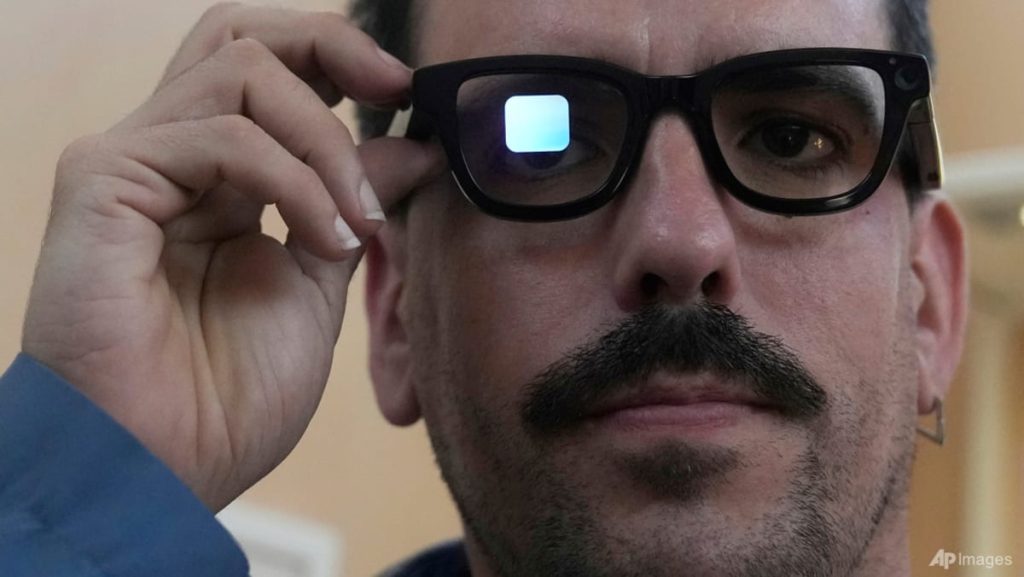NOT A SURE-FIRE BET WITH CONSUMERS
Still, smart glasses are not a sure-fire bet with consumers. In some ways, we’ve seen this film before. Remember the “glassholes?” The derogatory term emerged in 2013 to poke fun at people wearing Alphabet’s Google Glass lenses. People couldn’t get over the goofy, futuristic look of the frames, the nuisance of distracted users staring into the screens in public, or the fears of being surreptitiously filmed.
A lot has changed since then. Specifically, the rise of AI as well as improvements to devices’ battery life and weight. And Google seemed to learn that looks matter. If there’s a lesson from Meta’s success, it’s that these are fashion accessories as much as tech gadgets.
Google teased a new lineup of smart glasses in partnership with Samsung at a developers’ conference in May. It also announced it’s teaming up with eyewear brand Warby Parker and Korean trendsetter Gentle Monster on new AI-powered products.
But perhaps the biggest hurdle is the already growing backlash. There have been myriad reports of all kinds of creepiness going on, mostly related to a new wave of privacy and surveillance concerns. These devices make it much easier to record someone without their consent, even if they offer LED lights when a user is filming hands-free. Going mainstream will require a paradigm shift of consumers normalising this type of behaviour.
Not to mention that the pitch that these devices will help us reduce smartphone dependence rings hollow. It just introduces a new, more invasive kind of screentime. Companies like Meta and OpenAI have different incentives here. The Facebook parent and ChatGPT maker are likely seeking more control over the hardware end of their products, without having to rely on the likes of Apple.
Tech giants may be trying to convince us that a screen glued to our eyes is liberation, not intrusion. Sleek design breakthroughs or AI upgrades might make this a more compelling sell this time around, but they are likely to remain niche, offering more novelty than utility. Smart watches, for example, have become a multi-billion-dollar industry while still not coming close to replacing smartphones.
Right now, the race to put computers on our faces says more about Silicon Valley’s ambitions than our needs. For consumers, the view is blurry.
